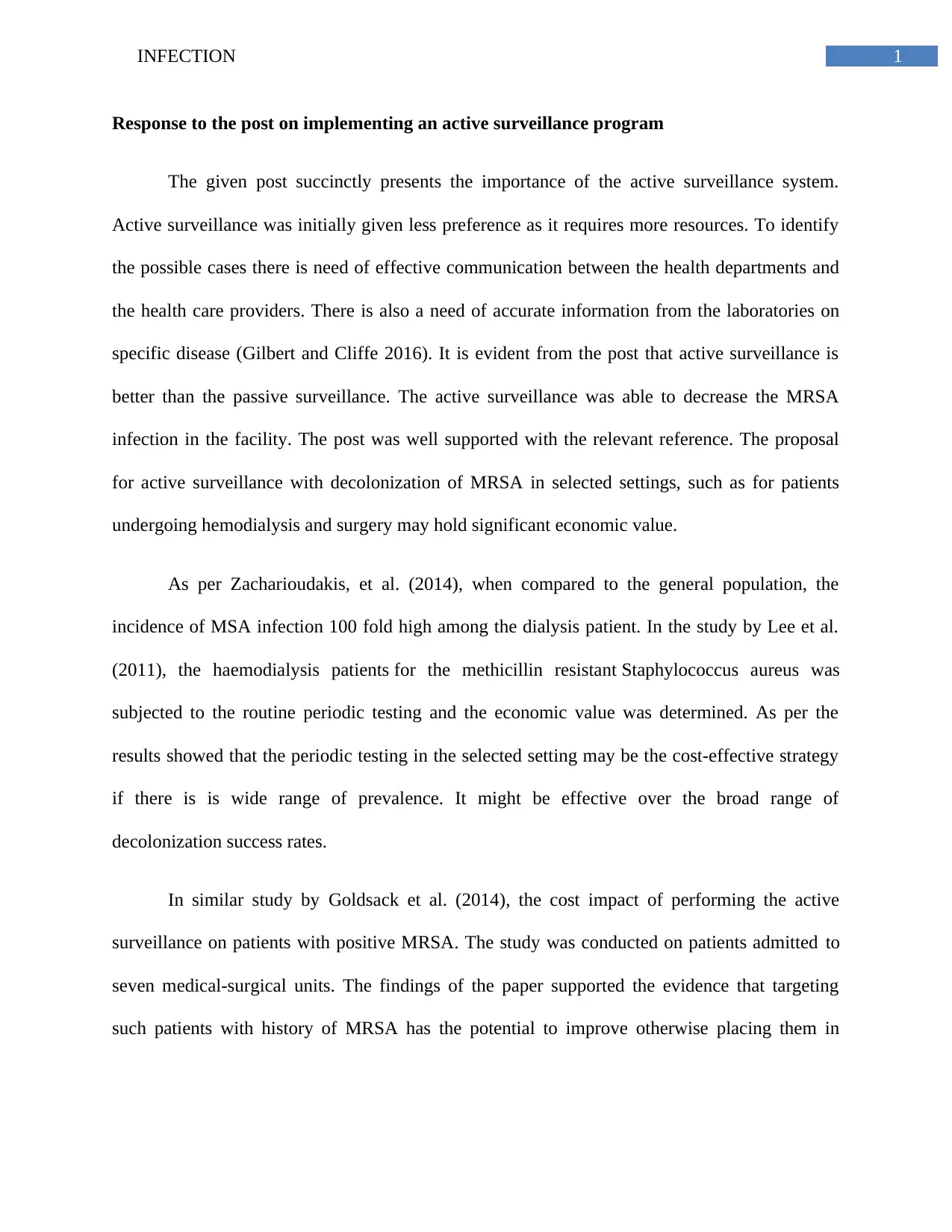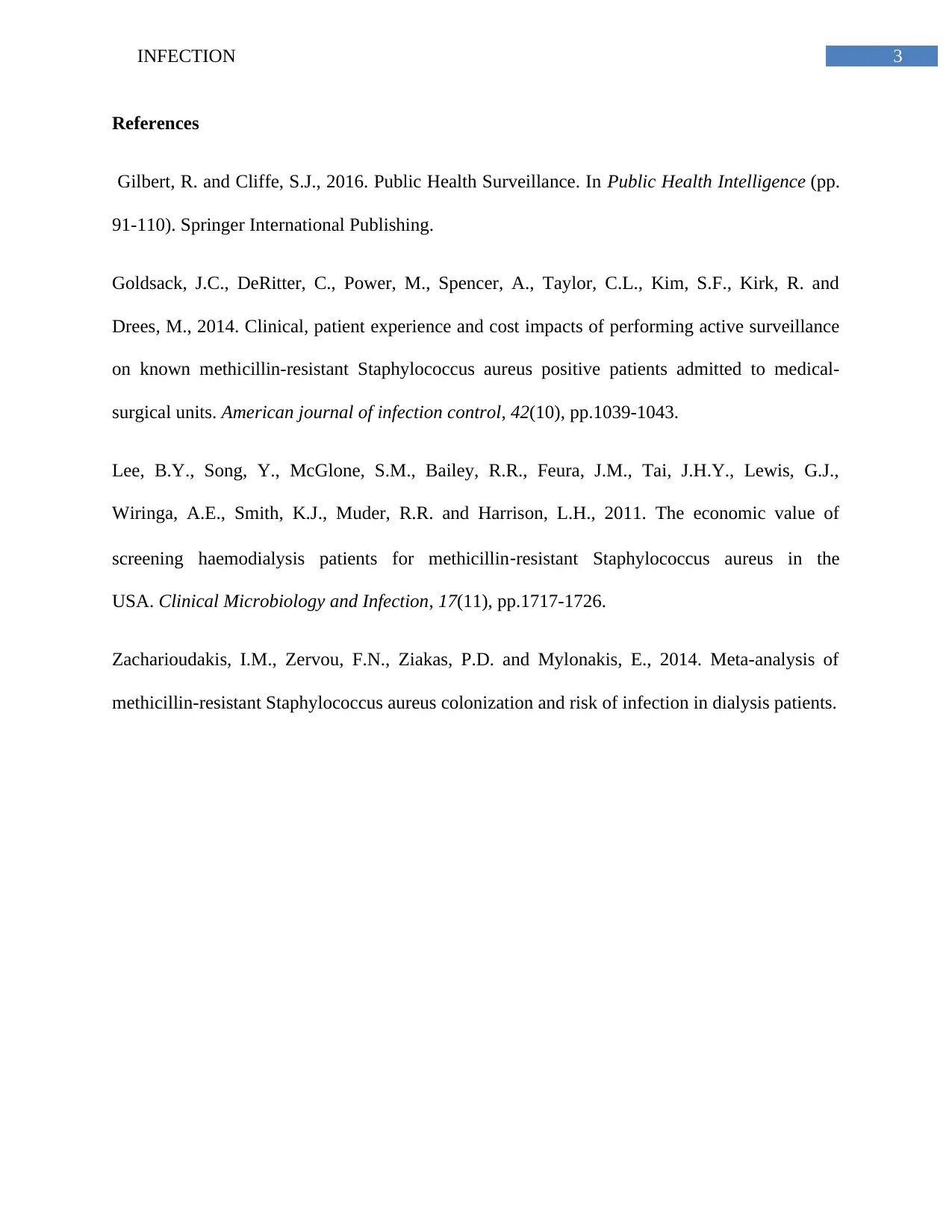Infection Control Report: Active Surveillance Program Evaluation
VerifiedAdded on 2020/04/15
|4
|555
|44
Report
AI Summary
This report examines the implementation and benefits of active surveillance programs in healthcare settings, particularly concerning Methicillin-resistant Staphylococcus aureus (MRSA) infections. The author responds to a post emphasizing the importance of active surveillance over passive methods, citing the need for effective communication, accurate data from laboratories, and the reduction of MRSA infections in facilities. The report highlights the economic value of active surveillance, especially in high-risk settings such as hemodialysis and surgery, supported by references to studies by Gilbert and Cliffe (2016), Zacharioudakis et al. (2014), Lee et al. (2011), and Goldsack et al. (2014). These studies indicate that active surveillance, including routine testing and targeted interventions, can be cost-effective and improve patient outcomes by reducing infection rates and associated costs. The report emphasizes the potential to reduce costs and improve patient experience through active surveillance strategies.
1 out of 4











![[object Object]](/_next/static/media/star-bottom.7253800d.svg)